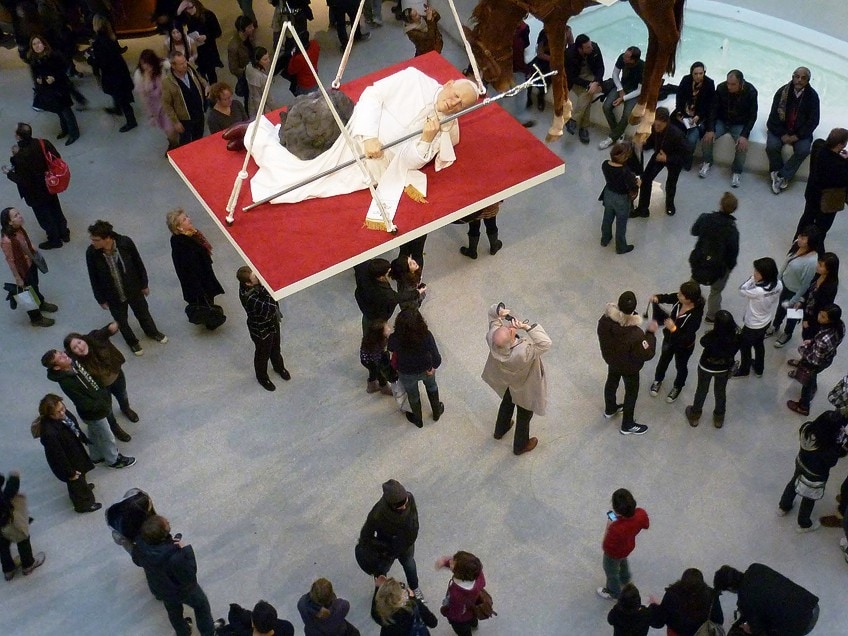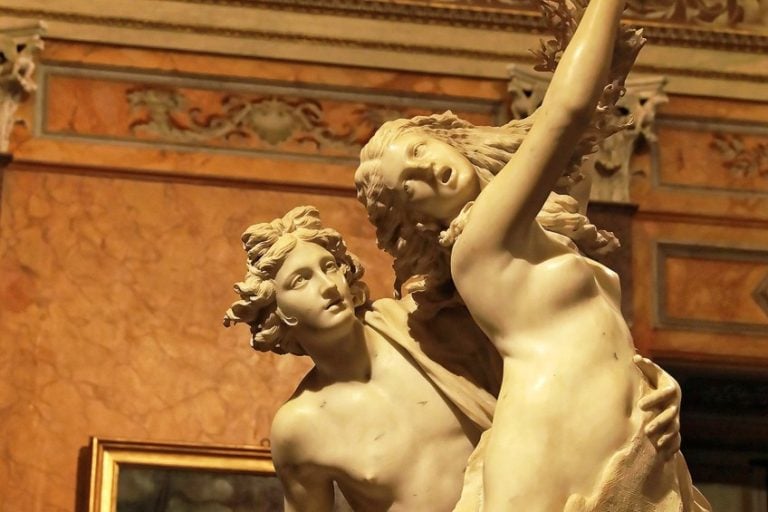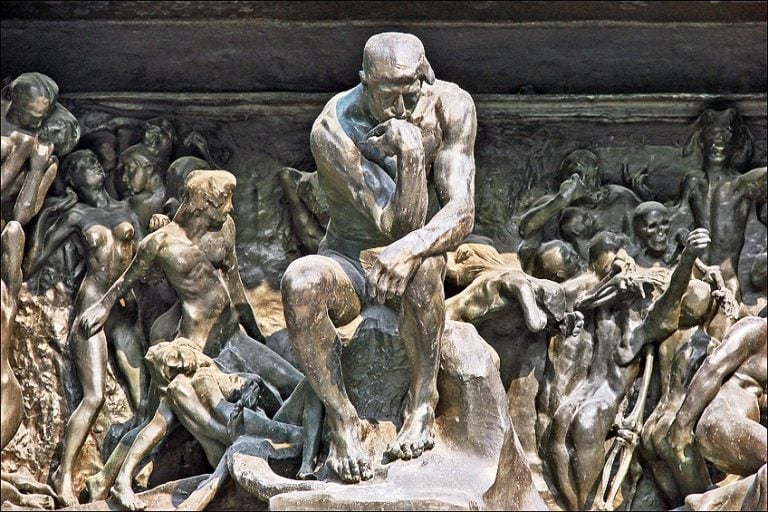Hyper-Realistic Sculptures and Their Sculptors – An Exploration
Sculptors that produce lifelike sculptures, for the most part, want to portray our bodies and lives as they are. Artists that aspire towards a high-resolution degree of details in sculpture are generally alluded to as hyperrealist sculptors, yet all hyperrealist artists are also labeled photorealists. Even if the realistic sculptures are larger than the usual to-to-life scale, all details are loyally replicated to be as near to the real-life form as achievable. Hyper-realist sculptors produce incredibly beautiful realistic human sculptures that will leave you in awe, horror, and the sensation of peering into someone else’s mirror.
Hyper-Realistic Sculptures and Their Sculptors
The technologies employed to make the resulting artworks in Hyper-Realistic art are considered developments of photorealism. The phrase mostly refers to an autonomous art movement and art style that has emerged in the United States and Europe since the early 1970s.
Let us now take a look at some of the finest examples of realistic statues and the artists that produced them.
Supermarket Lady (1970) by Duane Hanson
| Artist | Duane Hanson (1925 – 1996) |
| Date Completed | 1970 |
| Medium | Polyester |
| Dimensions (cm) | 166 x 65 |
| Current Location | OK Harris Gallery |
Through his hyper-realistic depictions of American everyday life, the artist created a sense of humanity, a true reflection of the American way of life. Supermarket Lady is a parody of a 1960s-era American lady. While it is unusual to see a housewife in curlers, leotards, and sandals wheeling a shopping cart in Western Europe, such a persona was common in the United States.
“Supermarket Lady” perfectly represents her period and the American culture of the 1960s and 1970s.
This was the moment when the transformation of consumer culture quickly took on a significant scale: the shopping trolley then supplanted the basket, the goods were produced commercially, and the model’s obesity can make you assume either the lavishness of this consumerist culture or the snack foods that typify it in popular circles.
Duane Hanson’s life-like sculptures, created from casts of actual individuals between 1966 and 1969, were colored to give the skin a realistic aspect, with visible veins and numerous blemishes. Hanson then clothed the figurines in clothing from second-hand stores or donated by the subject. Then he organized these realistic human sculptures in a gallery space like a three-dimensional snapshot of a daily scene, on a genuine size, or scale 1, but separated from its surroundings.
These works undoubtedly included significant societal critique. Hanson enjoyed citing the statement that “the bulk of men living a life of silent despair” several times.
We detect that Duane Hanson wished to encourage a critique of the modern human condition and that he meant to reflect the feeling of seclusion, hopelessness, and disconnection we encounter in the contemporary age, in the dejected and somber gazes of these character types of civilization, the majority of which were influenced by different subjects from the working class.
La Nona Ora (1999) by Maurizio Cattelan
| Artist | Maurizio Cattelan (1960 -Present) |
| Date Completed | 1999 |
| Medium | Polyester Resin |
| Dimensions (cm) | Variable |
| Current Location | Musée des Beaux-Arts de Rennes |
Pope John Paul II is depicted in this realistic statue laying on the ground after being struck by a meteorite. The sculpture’s representation of anguish enhances the pope’s public image. The title of the piece recalls Christ’s last words before hanging on the cross: “Why have you deserted me? ” The vicar of Christ on Earth perishes in a scenario devoid of symbolic elements, slain by a meteorite as though in a work of science fiction, in a gloomy theater of the ridiculous.
A meteor is blatantly dropped by Maurizio Cattelan onto a statue of Pope John Paul II. It appears to imply that not even the holiest man in Roman Catholic tradition is immune to bad luck.
There are many different interpretations of the piece. Some have interpreted it as a critique of the Catholic Church’s alleged history of concealing scandal under its veneer of morality. Others have interpreted it as implying that even the most powerful positions may become exposed. Our increasingly secularized society has confused and transformed the Church as an institution.

The Pope may represent adaptability and endurance; he may also be a call to develop new dialects for religion and culture to endure and change. Italian conceptual artist Maurizio Cattelan, often known as the court jester of the art world, uses subversion and comedy to question different aspects of the modern world, including authority, history, religion, the creation of art, and the idea of the artist. Cattelan uses a wide variety of objects in his art, such as a golden toilet and even real beings.
Cattelan’s early pieces, which subversively humor sociopolitical events and prominent members of the art world, first attracted notice in the 1990s.
Back of Jay (2004) by Evan Penny
| Artist | Evan Penny (1953 – Present) |
| Date Completed | 2004 |
| Medium | Silicon and aluminum |
| Dimensions (cm) | 64 x 68 x 12 |
| Current Location | Sotheby’s |
In this realistic statue, we can see a human’s head and partial back as observed from behind. As with all of Penny’s like-like sculptures, one can see little dimples, moles, and everything else one would expect to see on a real human. Evan Penny’s realistic sculptures depict human bodies down to the last hair, complete with wrinkles and distinguishing traits.
His figures, on which he skillfully adds layers of silicone and colors and implants actual hair, exude a sensual presence.
Despite this, their artificiality is clear. Compressions, stretching, distortions, and color mistakes, for example, are evocative of photographic, television, or computer image editing techniques. Anamorphic sculptures emerge from two-dimensionality, three-dimensional portraiture appears to be defective process-color prints, and warped sculptures proceed towards the fourth dimension of time.
“I aim to locate my realistic human sculptures somewhere between the way we view each other in actual spacetime and the way we view ourselves and each other in imagery,” the Canadian artist said when asked to characterize his present working phase in one statement. He creates hybrid entities in these realms in between that overwhelm the eye because of the photographic clarity of their surfaces and their tangible infiltration of our daily environment.
They challenge us with the anomalies of the individual image in our media era.
In Bed (2005) by Ron Mueck
| Artist | Ron Mueck (1958 – Present) |
| Date Completed | 2005 |
| Medium | Mixed media |
| Dimensions (cm) | 161 x 649 x 395 |
| Current Location | Queensland Art Gallery |
The massively sized, middle-aged subject sits with her legs drawn up beneath the bedclothes, exposing just her head and arms. Viewers are given the optimal vantage point to examine her countenance and question what she’s thinking because she’s positioned in a reclining posture with her eyes 150cm high. We have no background for the circumstances that have led to her current condition, but we have a clear image of her mental state.
Her drooping posture, slightly wrinkled forehead, and numerous other delicate features are brilliantly staged to vividly portray the subject’s ponderous and mildly distressed state of mind, with her hand partially obscuring her lips and her skyward gaze gazing on nothing in particular.
https://www.youtube.com/watch?v=tA8y-TRym4g
The realistic statue’s natural look and enormous scale initially stun us, yet her ordinariness allows us to relate to what is going on. We recognize ourselves frozen in comparable times of solitude. Ron Mueck is a well-known figure in the world of Hyperrealist sculptors. He contributed to the visual effects for the 1986 film Labyrinth.
Following that, he established a company to create visual effects for the advertising sector, which he was popular for a time. He shifted totally towards fine art in 1996, dedicating all of his efforts to life-like sculptures. He is most renowned for faithfully replicating all features of the human body on a greater or smaller size than life.
His realistic human sculptures have been exhibited in art galleries across the world, such as the Tate Modern in London.
Reunion (2016) by Sam Jinks
| Artist | Sam Jinks (1973 – Present) |
| Date Completed | 2016 |
| Medium | Silicone, resin, hair, pigment |
| Dimensions (cm) | 129 x 33 x 33 |
| Current Location | Sullivan and Strumpf |
In this Hyper-realist artwork, we can observe two women, naked and hugging each other. Many questions arise just by looking at the realistic statue. Are the women related in some way? What is their story and how long were they apart before their reunion? Sam Jinks is recognized for creating sculptures that are eerily lifelike and allude to the fleeting aspect of life.
Jinks had no official art background when he started creating sculptures out of silicone and latex as a youngster.
He perfected the technique while working in the film business before having worked with Patricia Piccinini for several years as a studio helper. He has also worked as a master of special effects for movies and television for 11 years, focusing mostly on his own work in the last five. His artwork includes peculiarities like a man with a fox’s head on him and a man hanging by his armpits from pegs.
He cites Renaissance masters like Bosch as major sources of influence. Now, his work is frequently discussed with that of Ron Mueck, another Australian. Before casting and silicone lamination, Jinks models his figurines in clay.
The fact that they are painted in flesh tones, covered in actual human hair, and frequently clad in garments created by Jinks’ mother gives them an unsettling aura of humanity.
David Bowie (2018) by Jamie Salmon
| Artist | Jamie Salmon (1971) |
| Date Completed | 2018 |
| Medium | Silicone resin, stainless steel |
| Dimensions (cm) | 137 x 96 x 63 |
| Current Location | Private Collection |
As the name suggests, this Hyper-realistic artwork portrays the music legend, David Bowie. It was created by Jamie Salmon. Jamie Salmon is a self-taught modern sculptor from the United Kingdom who now lives and works in Vancouver, Canada. He began his career as a commercial artist and sculptor for the film effects business.
He focuses on expressive and realistic sculptures, using materials such as silicone rubber, resins, hair, and cloth. Salmon’s work covers a wide range of topics.
“I prefer to utilize the human form to explore the nature of what we assume to be “real” and how we respond when our visual impressions of this reality are questioned,” he explains. “We have grown fascinated with our external look in modern culture, and with current technology, we can change it nearly any way we choose. How does this external change influence us, and how do others view us?”
“The initial concept behind the piece is the most significant aspect of the artistic process. If it isn’t as sturdy as possible, all of the time spent sculpting, molding, painting, and so on will be for naught, and the product will fall flat.” Salmon’s art is in public, private, and museum collections all around the world. His art is still being seen abroad. Salmon’s art is represented in the United States through Anthony Brunelli Fine Arts.
That concludes our exploration of hyper-realistic sculptures and their sculptors. A development of photorealism, hyperrealism is a trend in contemporary art that is gaining popularity. As a result, the art of hyper-realist sculptors is incredibly accurate and occasionally verges on being disturbing in its capacity to obfuscate the distinction between the living and the inanimate.
Frequently Asked Questions
What Is Hyper-Realistic Art?
Art is frequently seen as a means of distancing oneself from reality and a tool for discovering some hidden significance in the world around us. While the distinction between reality and art is essentially blurred in paintings and sculptures created by these artists, this is not entirely true for art forms like Hyper-realism. Many schools of realism are obviously committed to creating art that closely matches a real-life scene, with some of them even going above and beyond. Although the newly established style is thought to be a significant improvement over photorealism, there are still some minute discrepancies between the two.
What Are Lifelike Sculptures Made From?
Hyperrealist sculptors use a large range of materials to create their realistic appearance. For instance, Ron Mueck creates his masterpieces using clay inside of a plaster mold, which is then replaced with a composite material made of fiberglass, silicone, and resin. Since leaving his previous position as a model builder and puppeteer for children’s television in 1996, he has been creating them. Mueck enjoys playing with size in his artwork by making some pieces enormous and others little.
Isabella studied at the University of Cape Town in South Africa and graduated with a Bachelor of Arts majoring in English Literature & Language and Psychology. Throughout her undergraduate years, she took Art History as an additional subject and absolutely loved it. Building on from her art history knowledge that began in high school, art has always been a particular area of fascination for her. From learning about artworks previously unknown to her, or sharpening her existing understanding of specific works, the ability to continue learning within this interesting sphere excites her greatly.
Her focal points of interest in art history encompass profiling specific artists and art movements, as it is these areas where she is able to really dig deep into the rich narrative of the art world. Additionally, she particularly enjoys exploring the different artistic styles of the 20th century, as well as the important impact that female artists have had on the development of art history.
Learn more about Isabella Meyer and the Art in Context Team.
Cite this Article
Isabella, Meyer, “Hyper-Realistic Sculptures and Their Sculptors – An Exploration.” Art in Context. July 22, 2022. URL: https://artincontext.org/hyper-realistic-sculptures-and-their-sculptors/
Meyer, I. (2022, 22 July). Hyper-Realistic Sculptures and Their Sculptors – An Exploration. Art in Context. https://artincontext.org/hyper-realistic-sculptures-and-their-sculptors/
Meyer, Isabella. “Hyper-Realistic Sculptures and Their Sculptors – An Exploration.” Art in Context, July 22, 2022. https://artincontext.org/hyper-realistic-sculptures-and-their-sculptors/.











